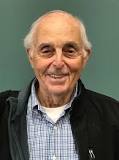Robert Arking
Country:
USA
Company:
Wayne State University
Robert Arking is a Professor of Biological Sciences at Wayne State University, and has long been interested in the mechanisms underlying health span extension in Drosophila and other model organisms. He did his graduate work at Temple University and two post-docs at Univ. of Virginia and Univ. of California-Irvine before joining Wayne State in 1975. His two current interests are. first, to better understand the difference in gene expression patterns between normal- and long-lived strains; and second, to finish writing the 4th edition of his textbook, "Biology of Longevity and Aging".
Robert Arking's Biology of Aging is an introductory text to the biology of aging which gives advanced undergraduate and graduate students a thorough review of the entire field. His editions have also served admirably as a reference text for clinicians and scientists, and they capture the extraordinary recent advances in our knowledge of the ultimate and proximal mechanisms underlying the phenomenon of aging. As a result, six important conceptual changes are included in the book:
. Clarified distinctions between the biological mechanisms involved in longevity determination and those involved in senescent processes.
. A new conceptual framework around which we can organize all the new facts about aging. This will assist readers to make sense of the information and use the data to form their own ideas.
. Increased knowledge of aging cells has lead to new ideas on how a cell transits from a healthy state to a senescent state, while still allowing for high levels of intra- and inter-specific variability.
. Discussion of senescent mechanisms assists the reader to understand that aging is a non-programmatic loss of function, likely arising from the loss of regulatory signals, and so is modifiable in the laboratory.
. Because the standard evolutionary story does not fully explain the evolution of social organisms, this edition also includes recent work dealing with intergenerational resource transfers.
. Lastly, if aging mechanisms are plastic, then the demand to move these anti-aging interventions into the human arena will inevitably grow. A discussion of the biological and ethical arguments on both sides of the question frames the question in an appropriate manner.
The mass of data related to aging is summarized into fifteen focused chapters, each dealing with some particular aspect of the problem. The last chapters integrate all this material into a coherent view of how the relevant biological processes change over the life span.
